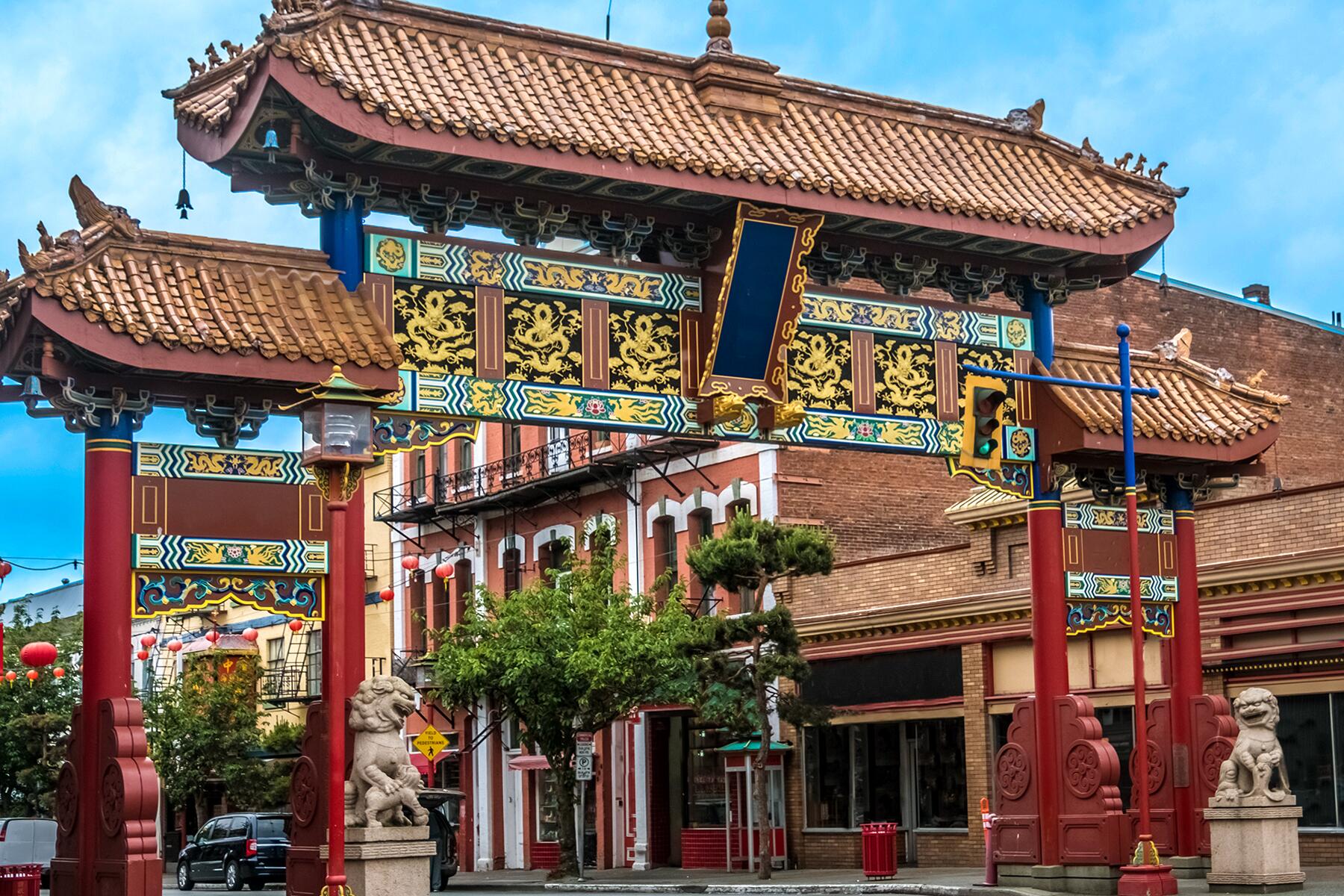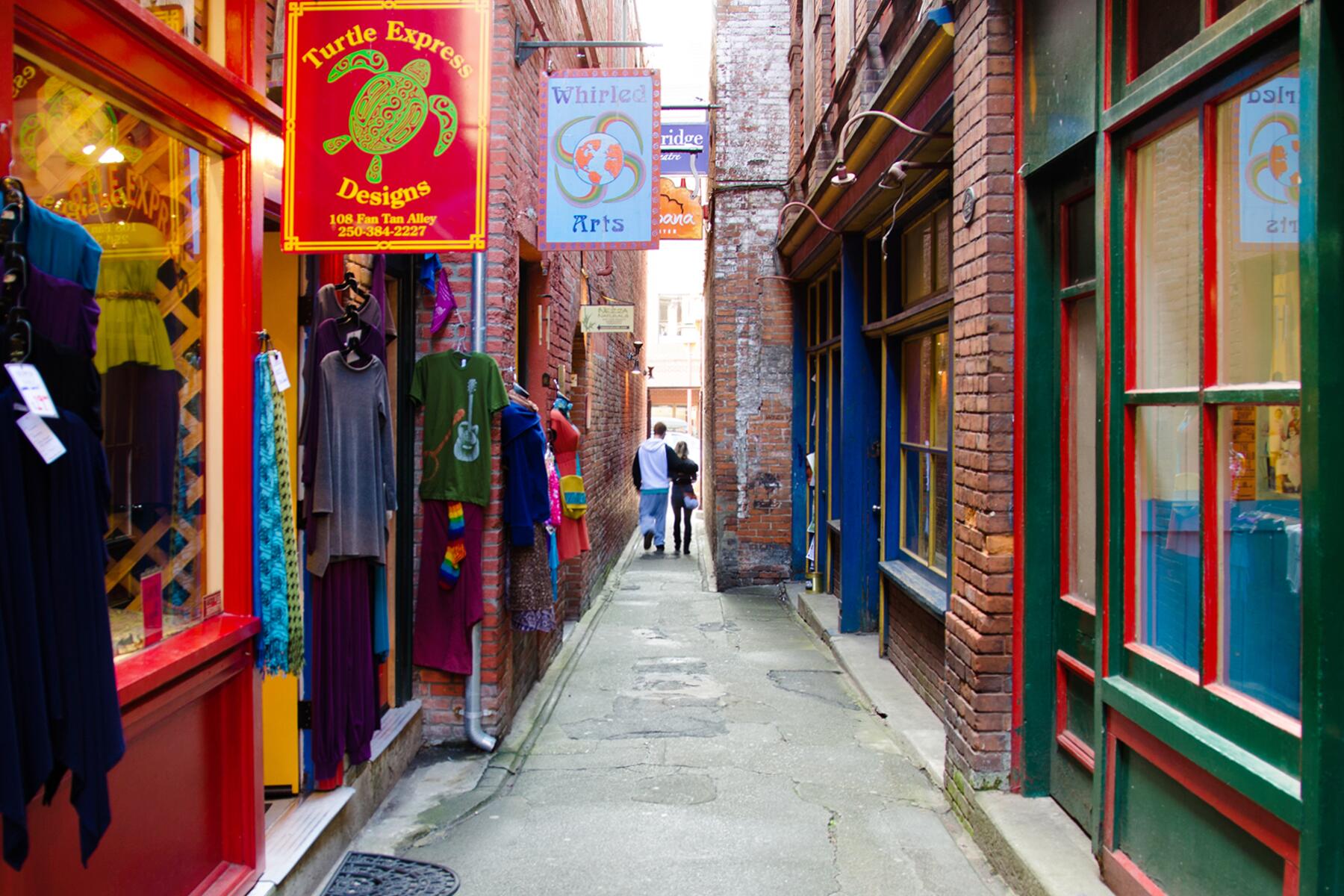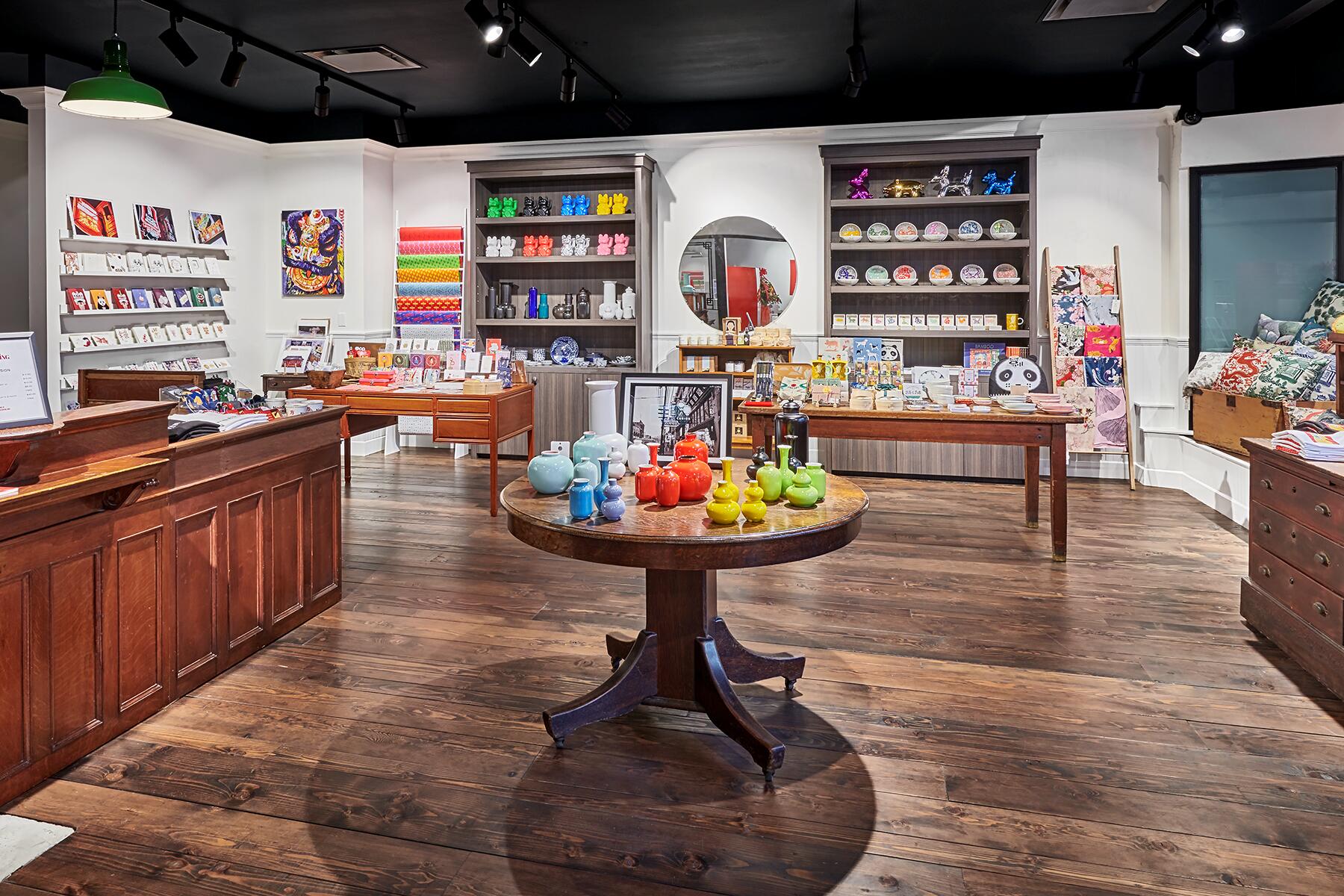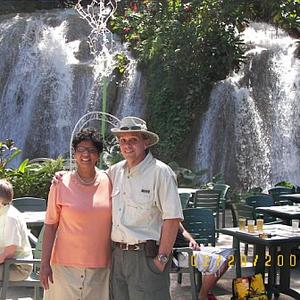“Food is the way to revitalize this neighborhood.”
At 11:30 a.m. on a Tuesday, Kam Wai Dim Sum in Vancouver buzzes with energy. Customers dawdle by the freezers, selecting frozen dumplings and spring rolls to take home for dinner. Others cluster around the counter, ordering from the quick-service menu. Redolent brown paper plates of shrimp dumplings, bean curd rolls, and barbecue pork buns are passed into the waiting hands of diners.
William Liu, CEO of Kam Wai, which opened on East Pender Street in 1991, watches, the corners of his lips upturned. He left a career as a classical opera singer to take over the family business, with his sister, Susan, when their father developed kidney failure in 2014.
“The biggest challenge [facing Chinatown] is keeping the legacy business’ doors open,” says William. “We’ve been losing businesses at such an alarming rate. Legacy businesses are the anchors in our community for so many of the residents, especially the seniors that have relied on them for 20-plus years, for familiarity and cultural services.”
While Chinatowns around the world are struggling to survive, those in British Columbia, led by business owners like William and Susan Liu, are on a path toward revival. In Victoria and Vancouver, the continent’s second-oldest and second-largest Chinatowns, respectively, major revitalization projects are underway to preserve the history and traditions of these neighborhoods, while updating them for the modern communities that live in and visit them.
Recommended Fodor’s Video
Preserving the Voices of the Past
Part of the renewal includes highlighting the history of the Chinese-Canadian community. A trio of new museums—the Chinese Canadian Museum and Chinatown Storytelling Centre in Vancouver, and the Chinese Canadian Museum in Victoria—are the keepers of this narrative.
A small group of Chinese male immigrants, primarily from Guangzhou (then known as Canton), came to Vancouver Island in the late 1700s, as merchants and fur traders aboard English ships. On the heels of the Opium Wars, and drawn by the financial promise of the gold rush, a much larger number arrived in the mid-1800s.
When the prospecting frenzy died down, they needed a new revenue stream. Widespread xenophobia prevented Chinese immigrants from participating in most professions. But a new project was underway: a railway that would connect British Columbia with the rest of Canada.
Charlayne Thornton-Joe, Visitor Experience and Facilities Coordinator of the Chinese Canadian Museum—Fan Tan Alley Exhibit in Victoria, explains the main reason immigrants were hired: “If you were non-Chinese, you would be paid about $2 a day, plus room and board. If you were Chinese, you would be paid a dollar a day, without room and board.”
In a physically demanding and often dangerous industry, immigrants were also deemed expendable. Some experts estimate that for every mile of track laid, three Chinese laborers perished, from accident, illness, or malnutrition. Their families were never notified or compensated.

B.C.’s First Chinatown
Victoria’s first Chinatown businesses were established in 1858, to cater to prospectors and later to railway workers. From markets to laundries, restaurants, gambling establishments, and legal-at-the-time opium dens, Chinatown covered six blocks, and was home to most of the city’s 3,000 Chinese residents.
Today, Chinatown encompasses three tidy blocks within Victoria’s downtown. Behind its hue-happy Gate of Harmonious Interest, erected in 1981, the buildings don’t look especially Asian. “Back then, we had no Chinese architects,” says Thornton-Joe. “They were all British or Italian. They did try to bring in colors like red for luck and green for prosperity.”
Even the most characteristically Chinese building in the city, Fisgard Street’s bright red, pagoda-roofed Chinese Public School, was designed by a Scottish architect in 1909. The first Chinese educational institution in Canada, it’s now operated as the cultural center by the Chinese Consolidated Benevolent Association.
Fan Tan Alley once teemed with opium and gambling dens. The narrowest street in Canada at just three feet wide, it was built to slow law enforcement who might give chase after breaking up illegal activity. Now hung with string lights and tasseled lanterns, the street is a shopping and picture-taking hotspot.
Although the buildings within Victoria’s Chinatown are owned by Chinese associations and developers, many of the current businesses and residents are non-Asian. Most of Vancouver Island’s 350,000 Chinese-Canadians live in the suburbs around the city. “When they first arrived, most people were in Chinatown because they felt they had to be,” Thompson-Joe says. “Success was getting a university degree, moving out of Chinatown.”
The new mix of restaurants—from a Mexican eatery specializing in handmade tortillas to farm-to-table fine dining, a new brewery, and Loy Sing Co., a 130-year-old institution that sells Chinese delicacies like pig’s ears and barbecue duck—carry on the culinary legacy.
Tarn Tarnayuth, who moved to Victoria from Thailand with her family as a teenager, is one of the neighborhood’s new business leaders. What began as a hands-on hobby for bonding with her mother, who suffers from Alzheimer’s disease, bloomed into Dumpling Drop, a beloved restaurant on Pandora Street.
Tarnayuth chose Chinatown for its lack of pretention, inexpensive rent, and “beautiful history.” She’s encouraged by the effort to renew the neighborhood, “to rebuild and attract more young people to spend money and create more businesses,” she says. “This is what we need to thrive.”
The Rise of North America’s Second-Largest Chinatown
At the outer edge of Vancouver’s Chinatown, it’s easy to feel like you’ve stepped through a time portal. The Dr. Sun Yat-Sen Chinese Classical Garden looks like a Ming dynasty garden home, although it was built in 1986—more than 100 years after the newest classical garden was created in China. Among its handsome courtyards, with patterned-pebble floors and terracotta dripping tiles, you can get a crash course in the philosophy behind traditional Chinese design, and visit a pair of galleries that exhibit contemporary Asian artists.
The garden was designed as a celebration of Chinese-Canadian contributions to Vancouver, especially to Chinatown, which developed in the 1880s. By 1900, it had 60 businesses catering to a population of more than 2,000 people. The 1960s through the mid-1980s were its boom years, as businesses and tourism blossomed.
A downturn followed, with competition from Chinese-owned businesses in East Vancouver and nearby Richmond. More recently, Chinatown has been forced to grapple with an overflow of the unhoused, whose encampments have been the subject of unflattering online commentary.
An influx of diverse communities into Vancouver has meant a growing number of non-Asian-owned businesses, such as plant-based Vegan Supply, hamburger joint Between 2 Buns, and Laowai, a glamorous, Prohibition-throwback speakeasy that serves 40-plus varieties of the sorghum-derived Chinese spirit baiju. While the blend of cultures seems promising, some experts believe it has inhibited integration and social cohesion.
Undaunted, the Vancouver Chinatown Foundation has taken a leading role in the city’s renovation, via a three-pillared strategy aimed at physical, economic, and cultural revitalization. Last winter, the foundation spearheaded the opening of the Chinatown Storytelling Centre, an immersive museum that features interactive kiosks and rotating exhibits that spotlight lost voices, from the World War II veterans who won the right to vote for Chinese residents, to a midcentury girls’ drill team.
On July 1, the community welcomed its newest cultural center, the Chinese Canadian Museum, in the historic Wing Sang Building on East Pender Street. The museum features a mix of photo and document galleries, a recreated 1930s living room, and an interactive immigration map. Its premiere exhibition takes a critical look at the 1923 Chinese Exclusion Act, which caused decades of alienation, fear, and loss within Vancouver’s Asian community.

Carol Lee, a Harvard-educated skin-care entrepreneur and daughter of the late Chinatown-born real estate mogul Bob Lee, established the Vancouver Chinatown Foundation in 2009 and chairs its Revitalization Committee. “Vancouver isn’t like every other Chinatown,” says Lee. “It really represents contribution and sacrifice. Despite the hardship, they stuck together as a community and thrived. We need to preserve what they worked for.”
For Lee, part of the preservation equation is being an active participant in the business community. In addition to her own business’s headquarters, she has purchased three restaurants in the neighborhood, including the legendary Foo’s Ho Baiju, a bastion of home-style Cantonese cooking. “Food is the way to revitalize this neighborhood,” Lee says. “It is its own form of storytelling, and benefits both residents and tourists.”
Thanks to a $1.8 million grant from the Canadian government, Lee and the foundation will soon be able to tackle more of their wish list. She ticks off the planned improvements on her fingers: enhanced lighting, to help bring back Chinatown’s once-vibrant nightlife. Face-lifts for many of the aging historic buildings. Improved infrastructure to help support new business owners, especially restaurants. New affordable housing.
When told by a visitor that it would be great to come back in five years and witness all the changes, Lee levels her gaze and counters, “Two. In two years, I think we can make this one of the most interesting neighborhoods in North America.”
I was in Vancouver's Chinatown on Wednesday, it was like a scence from Night of the Living Dead. The junkies wandering around and sleeping it off on the sidewalks were more abundant then the Chinese and the tourists. I had some great Dim Sum but was wondering about my out of sight luggage in the rental car the whole time. As for the Chinese Garden, there is a entrance fee side and a free side. Tourist mistake, I paid. Unless you are into horror, I would avoid Vancouver Chinatown. Go to Richmond out by the airport, tons of different Asian restaurants.
The post sure makes it sound appealing. The reality is that the city of Vancouver refused to deal with the homeless and the drug addicts wandering the streets, so try to avoid them as best you can when you go to buy some delicious pork buns.







We were in Vancouver Chinatown two days ago. I'm sad to say that in a certain area there you see nothing but staggering, drug addicted, junkies. They are just about everywhere. I even saw two people sitting on the sidewalk, leaning against the wall, and one person was trying to help the other find a vein to inject drugs. Be very careful down there.